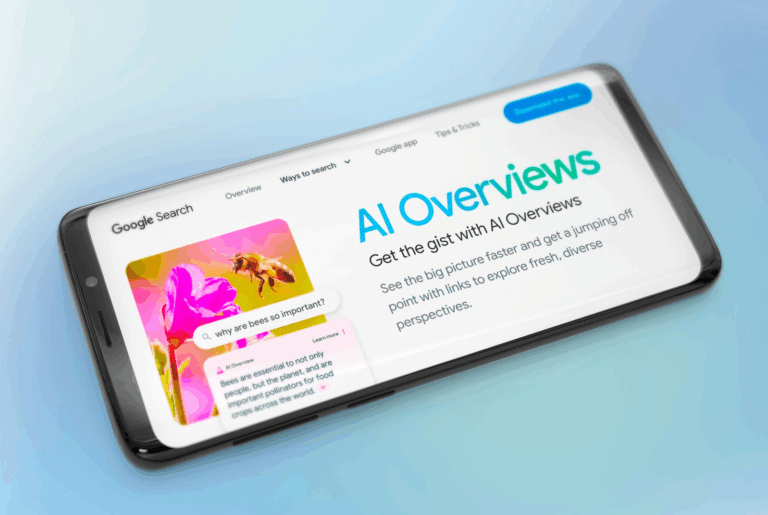With the upcoming peak retail season right around the corner, brands are under pressure to deliver results fast. Budgets are being assessed and annual targets are on the line, making it tempting to go all-in on short-term gains. But prudent Ecommerce leaders know that sustainable growth comes from balancing the pursuit of new customers with the value of the ones you already have.
Now is the time to find that equilibrium.
Customer acquisition remains ever crucial, especially in today’s crowded and competitive digital environment. But acquiring new shoppers at the expense of existing relationships can erode long-term profitability. Instead, brands need to drive incremental growth by aligning acquisition and retention efforts, creating campaigns that not only attract new audiences but also strengthen loyalty and boost lifetime value.
Here are a few key considerations to guide your strategy in this upcoming peak retail period.
Balance New and Returning Customers through Performance Marketing
From a revenue growth standpoint, SEM is all about profitable visibility. That means going beyond basic clicks or impressions and doubling down on tactics that maximise ROI. The right strategy ensures that every dollar spent is used to acquire not just traffic, but high-value customers.
SEM budgets can quickly get diluted across underperforming audiences if there is no clear structure. This is especially risky during high activity periods, when both competition and cost-per-clicks spike. The brands that win are the ones that plan for performance, not just presence.
Here’s how to structure your SEM campaigns to strike the right balance between acquisition and retention:
- Allocate budgets between prospecting and retargeting to make sure you’re not just attracting new audiences, but also nurturing those already familiar with your brand.
- Leverage first-party data to build lookalike audiences that mirror your most valuable customers.
- Adopt a full-funnel approach using tools like YouTube and Demand Gen campaigns to drive upper-funnel awareness.
- Optimise Performance Max campaigns for customer lifetime value (CLV), and not just immediate ROAS, prioritising quality over short-term wins.
The second half of any year is a high-stakes moment, but it is also a prime learning ground. The data gathered now can help refine your SEM strategy across peaks in the future.
Attracting High-Intent Shoppers and Retaining Organic Traffic
During peak retail moments like BFCM, Christmas, etc., organic traffic becomes a powerful tool to attract, engage and convert without the rising costs of paid media. Therefore, SEO is about meeting your customer where they are in the journey and turning search visibility into sustained growth.
However, effective optimisation is about delivering the right content at the right stage, and turning discovery into loyalty.
Here’s how to develop an SEO strategy that supports both acquisition and retention:
- Build a full-funnel content strategy that speaks to every stage of the buyer journey – from TOFU guides to BOFU comparison pages and reviews.
- Invest in evergreen content like FAQs, ‘How-To’ articles, tutorials, and troubleshooting pages. These resources not only rank well over time but build long-term trust and drive repeat engagement.
- Use internal linking strategically to guide returning visitors to loyalty programs, cross-sell opportunities, or content that deepens brand connection.
- Apply structured data (e.g., FAQ schema, product reviews, how-to markup) to improve visibility in search features like rich results and increase credibility at a glance.
- Prioritise technical SEO to ensure your site loads fast, navigates easily, and works across devices, creating a seamless customer experience.
These critical retail moments often drive spikes in organic discovery as consumers search for deals, solutions, and comparisons. Brands with strong SEO foundations are best positioned to capture that intent and keep those customers coming back well beyond sales end.
Using Social Channels to Engage New Audiences while Building Brand Loyalty
Social channels have evolved from discovery tools into conversion engines and, as an extension, loyalty channels. For brands looking to scale both awareness and customer lifetime value, a smart social strategy blends storytelling with segmentation, and community with commerce.
Peak trading seasons present a key moment to leverage social platforms not just for short-term reach, but for building long-term brand equity. The brands that win on social are those who show up consistently.
Here’s how to turn your social efforts into a growth driver across the funnel:
- Use influencer partnerships and user-generated content (UGC) to attract new audiences with authenticity. Peer-driven endorsements build instant credibility and help you tap into niche communities.
- Run always-on brand campaigns that reinforce your positioning and build trust over time. Familiarity drives preference, especially in competitive periods like Black Friday sales.
- Reconnect with lapsed or one-time customers by creating custom audiences based on purchase behaviour, loyalty tiers, or site engagement. Tailored messaging can reignite interest and boost repeat orders.
- Drive loyalty with exclusivity through promotions for members, first access to new arrivals, and personalised offers that make your audience feel seen.
When done right, social can act as a relationship engine. This is your opportunity to deepen that connection, spark new engagement, and turn followers into loyal, high-value customers – a high value brand building moment.
Converting First-Time Buyers into Loyal Customers through Targeted Communications
Your owned channels (email & SMS) are some of the most cost-effective drivers of revenue and retention. With customer acquisition costs rising and inbox competition at an all-time high, the brands winning in this space are the ones delivering timely, relevant, and segmented communication.
Your CRM strategy needs to go beyond the blast. It’s about automation, intelligence, and meaningful engagement at every stage of the customer lifecycle.
Here’s how to build a CRM and email program that maximises lifetime value:
- Set up automated welcome flows tailored to whether someone is a first-time buyer or a repeat visitor. Early engagement is critical, and context-aware messaging increases the chances of turning new customers into loyal ones.
- Segment and elevate your VIP audience with premium, high-value messaging – think early access, exclusive offers, or curated recommendations that reflect their importance to your brand.
- Leverage post-purchase emails to drive thoughtful cross-sells, upsells, and reorder nudges.
- Build a win-back strategy that targets lapsed customers with messaging rooted in their past behaviour. Remind them why they loved your brand and offer compelling reasons to return.
These holiday shopping surges are key opportunities to cement loyalty – a well-structured CRM and email strategy ensures you do just that.
Driving Profitable Growth and Repeat Purchases through Marketplaces
With rising competition and price sensitivity (especially around seasonal retail milestones), brands need to approach marketplaces not just as a sales channel, but as a profit centre.
The brands succeeding here are the ones treating their marketplace presence like a portfolio – optimising for both growth and efficiency at the SKU level.
Here’s how to build a smarter marketplace strategy that drives sustainable revenue:
- Identify your top-performing acquisition products based on New-to-Brand sales, and make sure their listings are optimised to convert.
- Run marketplace ads strategically, using them to promote high-margin or strategic hero products – ensuring low CAC while protecting profitability.
- Incentivise repeat purchases with tools like Subscribe & Save, loyalty bundles, or exclusive marketplace-only deals – all designed to boost lifetime value and reduce churn.
- Get granular with your unit economics – understand contribution margins at the ASIN level to know where to invest, where to pull back, and how to scale profitably across your catalogue.
Demand-heavy periods are the times when marketplace traffic surges – but without a clear margin-first plan, that attention can quickly turn into wasted spend. Get clear on what to push, how to price, and where to double down – and let the data guide your next move.
Partner with Pattern for Revenue Growth
For most brands, while these periods serve as critical customer acquisition opportunities, there is also a chance to drive meaningful growth, deepen customer relationships, and set the tone for the rest of the year. But doing it right means aligning strategy, spend, and execution across every channel.
Reach out here to learn more.



